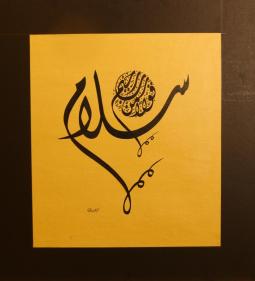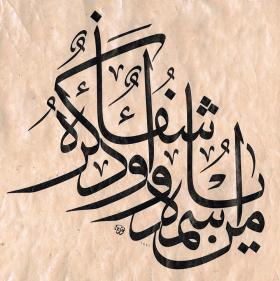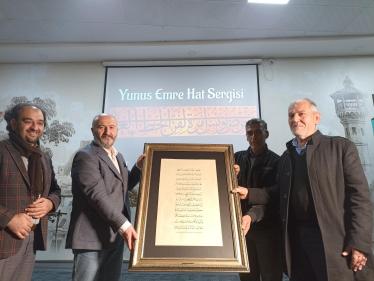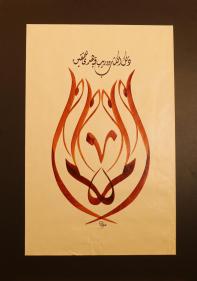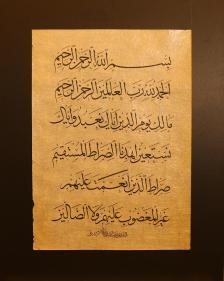Calligraphy Courses at Yunus Emre Institute Attract Great Interest
Yunus Emre Institute continues its cultural and artistic activities with courses organized in the field of art as well as Turkish courses in its centers around the world. Continuing its courses, workshops, exhibitions and talks in many fields of traditional Turkish Islamic handicrafts such as marbling, miniature and illumination, Yunus Emre Institute's calligraphy courses attract great interest.
IT HAS BEEN A COMMON VALUE OF THE ISLAMIC WORLD
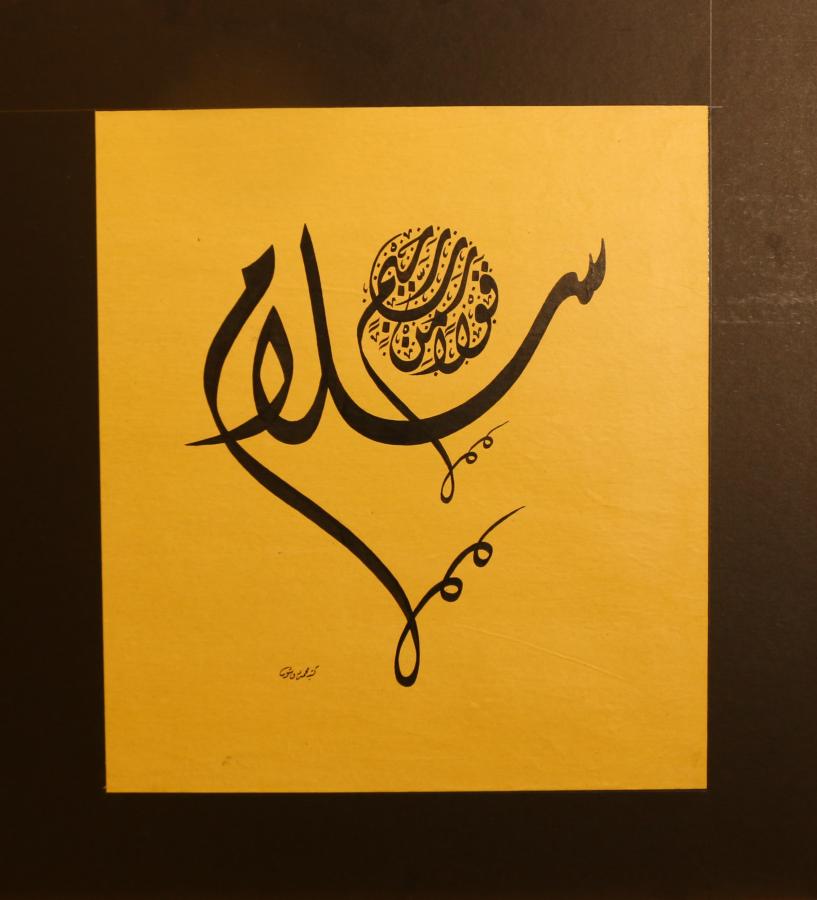
The word "calligraphy", which derives from the Arabic infinitive "hatt" and means "path", has been used in the sense of "the art of writing Arabic script in a beautiful way by adhering to aesthetic measures. The art of calligraphy, which is defined as "a spiritual geometry created with corporeal tools" in the sources on the art of calligraphy, has established a throne in hearts throughout its development over the centuries.
According to the Encyclopedia of Islam, calligraphy, which was used by the Arabs, became a common value of the Islamic ummah a few centuries after the hijrah. Before spreading from Mecca and Medina, calligraphy, known as "cezm", was practiced in two styles. The one whose vertical letters were long and slanted from right to left was called "mâil"; the one whose horizontal letters were too long was called "meşk". After Ali chose Kufa as the center of administration, the art of calligraphy showed great development and gained the name "Kûfî". The name Kûfî was used as a generic name for calligraphy and was also used as a substitute for Meccan and Medinan scripts until the Abbasid period.
The use of Kûfî lasted 150 years during the Abbasid period. Ibn Muqla (d.940), a famous Abbasid vizier and calligrapher from Baghdad, developed a system for determining the main dimensions of writing thanks to his knowledge of geometry. Ibn Muqla accepted the dot, elif, and circle as a standard measure for the beauty of letters. Within these measurements, he laid down the procedures and principles of six types of writing: muhakkak, reyhani, sülüs, nesih, tevki and rika. These methods, called Aklam-ı sitte, showed a great development a century later with the Baghdad Calligrapher Ali B. Hilan (d.1032). Continuing its development process, the art of calligraphy matured 200 years later with the efforts of the Abbasid Caliph Yakut al-Musta`simi (d.1298) with more specific rules.
CALLIGRAPHY EXPERIENCED ITS MOST BEAUTIFUL PERIOD WITH THE OTTOMAN TURKS
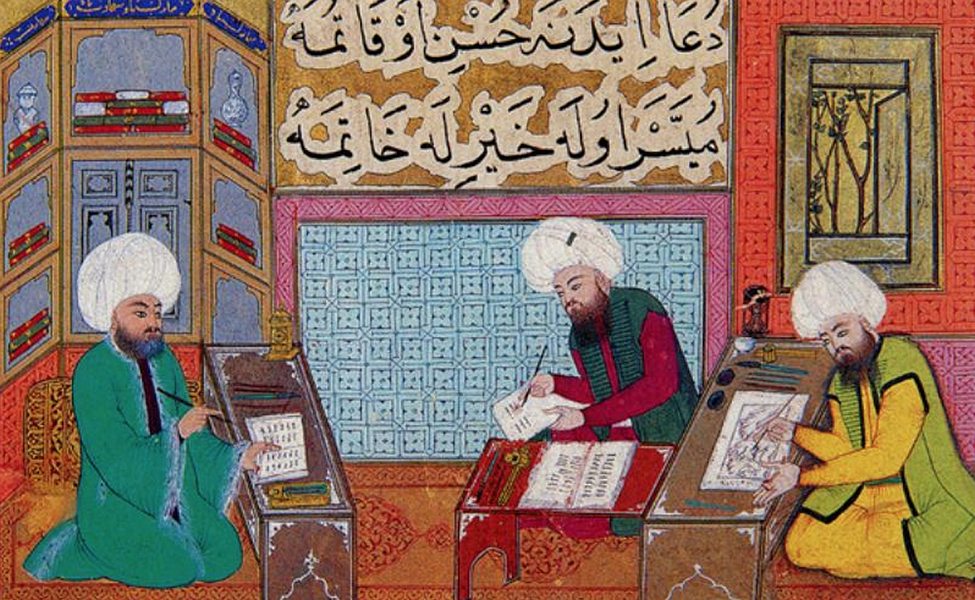
In 1258, after the Abbasid rule disappeared from the stage of history, the superiority in writing passed into the hands of Turkish and Iranian calligraphers. Although Iranian calligraphers wrote aklam-ı sitte according to their own understanding, they did not depart from Yakut's style. The Ottoman Turks, on the other hand, established a superior ecole in the art of calligraphy that was very difficult to reach. In the 16th century, Sheikh Hamdullah (d. 1520), considered the father of Ottoman-Turkish calligraphers, brought beauty and maturity to the aklam-ı sitte that had not been achieved until then. In the second half of the 17th century, Hafız Osman revised Sheikh Hamdullah's style and eliminated some elements to create his own unique style of calligraphy.
Hafız Osman's groundbreaking work in calligraphy greatly influenced the calligraphers of his time. A century later, İsmail Zühdü and his brother Mustafa Rakım were inspired by his writings to create their own accent Mustafa Rakım reached the pinnacle of all calligraphic styles, especially with the perfection of stacking in celi sülüs as well as in sülüs and nesih. Hafız Osman succeeded in transferring his style from sülüs to celi. Sami Efendi, the master of celi who succeeded Mustafa Rakım, added a new dimension to Mustafa Rakım's path by applying İsmail Zühdü's sülüs letters to celi.
"THE QUR'AN WAS REVEALED IN HIJAZ, READ IN EGYPT, AND WRITTEN IN ISTANBUL"
After Istanbul was conquered by the Turks, it became the most important center of calligraphy. The undisputed acceptance of Istanbul's crown in calligraphy in the Islamic world has been expressed as follows: "The Quran was revealed in Hijaz, read in Egypt and written in Istanbul." This is why calligraphy lovers from all over the world flocked to Istanbul to learn this art.
Ahmed Karahisari, Hafız Osman, İzzet Efendi, Mahmut Celaleddin Efendi, Mustafa Rakım, Şeyh Hamdullah, Yesarizade Mustafa are among the Turkish calligraphers who became ecoles.
Austria: Vienna Yunus Emre Institute
Address: Waehringer St.6-8/14-15 1090, Vienna/Avusturia
Telephone: +431 310 34 82
E-mail: viyana@yee.org.tr
Bosnia and Herzegovina: Sarajevo Yunus Emre Institute
Address: Dženetića čikma 2, 71000 Sarajevo
Telephone: +387 33 217 581 / +387 33 217 582
E-mail: saraybosna@yee.org.tr
South Africa: Johannesburg Yunus Emre Institute
Address: 1 Pretoria Street, 2192, Oaklands, Johannesburg
Telephone: +27818908079
E-mail: johannesburg@yee.org.tr
U.K: London Yunus Emre Institute
Address: 10 Maple Street, London, W1T 5HA
Telephone: +44 20 7387 3036
E-mail: londra@yee.org.tr
Qatar: Doha Yunus Emre Institute
Address: Al Dafna 66 , Street 813 , No : 118 / Doha
Telephone: +974 44866029
E-mail: doha@yee.org.tr
Pakistan: Lahore Yunus Emre Institute
Address: Aiwan-e Iqbal Complex, Egerton Road, Lahore 54000
Telephone: +92 42 36310090
E-mail: lahor@yee.org.tr


